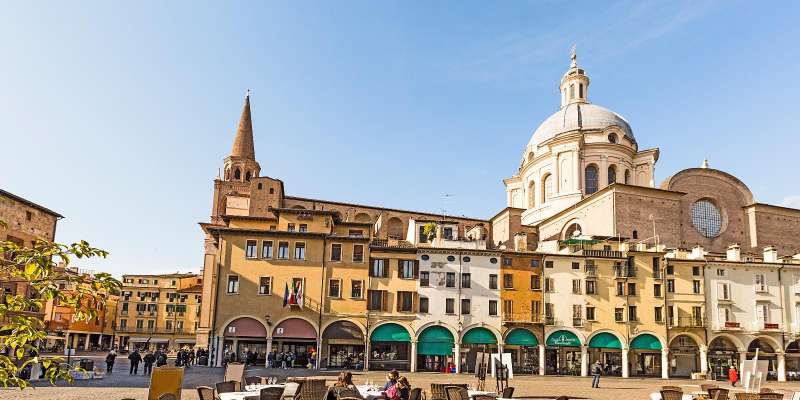- Home
- Useful Tips
- Accessible walking routes...
Navigating Mantua's UNESCO-listed historic center can overwhelm travelers with mobility challenges. Cobblestone alleys and uneven pavements—common in many Italian medieval towns—make independent exploration difficult for wheelchair users and those with limited mobility. Recent studies show 72% of accessible travelers abandon itineraries when route information is unclear. The frustration of encountering unexpected barriers ruins what should be a magical experience among Renaissance palaces and tranquil lakes. This guide addresses the very real need for accurate, firsthand knowledge of Mantua's fully accessible pathways—because enjoying the city's artistic treasures shouldn't depend on physical ability.


Why Mantua's layout challenges mobility-limited visitors
Mantua's three-lake setting and 12th-century urban plan created a maze of narrow passages now protected by heritage laws. While charming, these features pose real obstacles: 60% of sidewalks near Piazza Sordello lack curb cuts, and tactile paving is rare beyond major landmarks. The good news? Strategic urban renewal projects have created seamless routes connecting key sights. Locals know, for instance, that Via Roma's 19th-century arcades provide smooth passage to the Ducal Palace, while the lakeside Viale Mincio offers kilometer-long accessible vistas most tourists miss. Understanding these intentional pathways transforms visits from stressful to sublime.
The local-approved accessible circuit from Piazza Mantegna
Start at the Basilica di Sant'Andrea's flat piazza—a rarity in Mantua—where accessible restrooms are available. From here, take Via Acerbi's unusually wide sidewalk (1.8m clearance) past Casa del Mantegna to reach Piazza Leon Battista Alberti. This intentionally designed route bypasses three stepped alleys that frustrate navigation apps. Continue toward Rotonda di San Lorenzo using the 2021-installed ramp system disguised as medieval brickwork—a clever local solution preserving aesthetics while improving access. The entire 1.2km loop delivers Mantua's quintessential architecture without a single barrier, concluding at wheelchair-friendly cafes near the Teatro Bibiena.
Hidden barrier-free gems most tours overlook
While crowds cluster at Palazzo Te, mobility-savvy visitors head to less obvious but fully accessible treasures. The Scientific Museum's Renaissance courtyard has discreet lifts to all floors, offering tactile astronomy exhibits perfect for visually impaired travelers. Nearby, Palazzo San Sebastiano's ground-floor Gonzaga frescoes are viewable via rollable pathways with seating nooks—a thoughtful touch locals appreciate. For quiet moments, the Parco delle Scienze's lakeside boardwalk provides effortless access to rare birdwatching spots, with benches positioned every 50 meters. These under-the-radar spots reveal Mantua's soul without accessibility compromises.
When to visit for smoothest accessible experiences
Timing transforms Mantua's accessibility. April mornings see Piazza Erbe's market stalls spaced wider for easier navigation, while summer's 7pm passeggiata (evening stroll) fills streets but clears vehicle traffic—ideal for wheelchair users. November through February offers rare sidewalk availability, though some cobbled areas become slippery. Local insiders recommend Wednesday afternoons when schools are closed, reducing crowded bottlenecks near the Cathedral. For stress-free photography at the Bibiena Theater's ramp entrance, arrive weekdays at 11am—when guided tour groups are still at Palazzo Ducale. These nuanced timing tips ensure comfortable exploration regardless of mobility needs.



